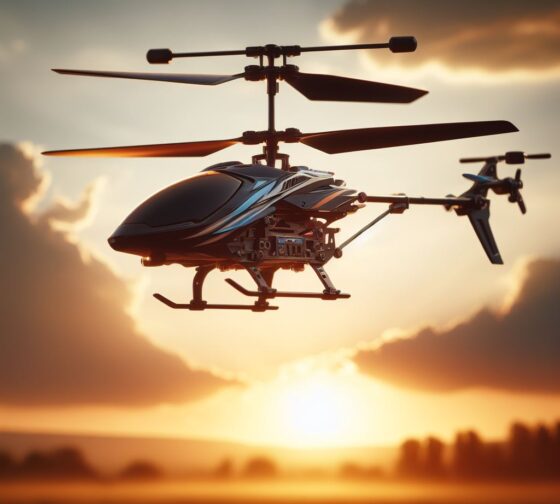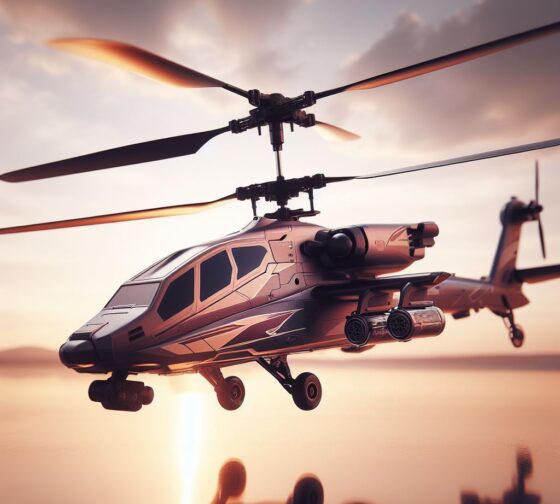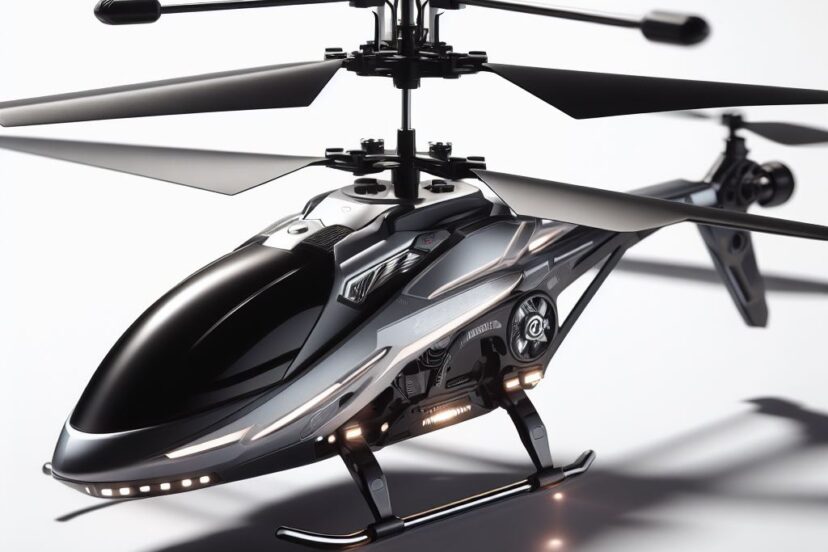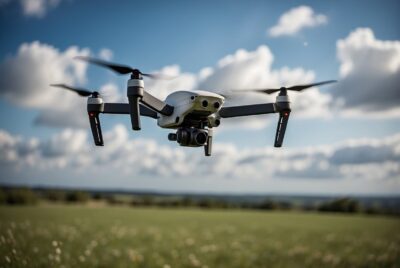Helicopter Drone Essentials: A Comprehensive Guide
*We may earn a commission for purchases made using our links. Please see our disclosure to learn more.
The Helicopter Drone: Pioneering Aerial Exploration
The mesmerizing realm of the helicopter drone unfolds an awe-inspiring narrative of innovation and exploration in the skies. As a passionate aficionado and guide through the dynamic landscape of drones, I invite you to embark on an exhilarating journey, delving into the multifaceted world of these aerial marvels. Helicopter drones, with their versatile capabilities and evolving technologies, transcend mere flight; they embody a fusion of engineering excellence and boundless possibilities. Join me as we navigate through the nuances of these rotor-propelled wonders, discovering their evolution, diverse applications, and indispensable considerations for enthusiasts and curious minds alike.
Introduction to Helicopter Drones
Helicopter drones, often referred to as rotary-wing drones, are agile aerial machines propelled by rotating blades that enable vertical takeoff, hover, and maneuverability in confined spaces. Their design allows for seamless flight in different directions, making them incredibly versatile for a multitude of purposes.
Evolution of Helicopter Drones
The evolution of helicopter drones traces its roots back to the early 20th century when aviation pioneers began exploring the concept of vertical flight. Notably, the development of the autogyro by Juan de la Cierva in the 1920s laid the groundwork for the modern helicopter. Technological advancements in materials, propulsion systems, and stabilization mechanisms have been pivotal in transforming these machines into the sophisticated drones we see today.
Types of Helicopter Drones

Primarily, helicopter drones are categorized into two types: single rotor and multi-rotor. Single rotor drones, equipped with one main rotor and a tail rotor, provide greater efficiency for long-range flights and heavy lifting. Conversely, multi-rotor drones, featuring multiple rotors (usually four to eight), offer exceptional stability and maneuverability, making them ideal for tasks requiring precision and agility.
Applications of Helicopter Drones
The versatility of helicopter drones has led to their widespread use across diverse industries. In the field of aerial photography and videography, these drones offer a unique perspective, capturing breathtaking shots for cinematography, real estate, sports events, and more. Additionally, they play a pivotal role in surveillance and security, providing an aerial vantage point for monitoring large areas efficiently. Moreover, in search and rescue operations, helicopter drones aid in accessing inaccessible or hazardous areas, assisting in locating missing individuals or assessing disaster zones quickly.
Recreationally, helicopter drones have soared in popularity among hobbyists and racing enthusiasts. Drone racing events have become a thrilling pastime, showcasing the agility and speed of these remarkable machines.
Factors to Consider Before Buying a Helicopter Drone
Making an informed decision when purchasing a helicopter drone involves considering several key factors. Firstly, understanding the intended purpose of the drone is crucial. Whether it’s for recreational use, professional photography, or specialized operations, aligning the drone’s features with its intended use is essential. Additionally, evaluating the flight time and battery life, as well as the camera specifications in terms of resolution and stabilization capabilities, ensures meeting specific requirements. Size and portability play a role, especially for those who value mobility and ease of transport. Lastly, budget considerations must be taken into account, as different models offer varying features and capabilities at different price points.
Best Practices for Flying Helicopter Drones
Flying a helicopter drone responsibly involves adherence to regulations, safety measures, and proper planning. Understanding and complying with local aviation laws and regulations is paramount. Creating and following a comprehensive pre-flight checklist, which includes checking the drone’s condition, ensuring proper calibration, and verifying the surroundings for potential obstacles or hazards, significantly enhances safety.
Maintenance Tips for a Helicopter Drone
Maintaining a helicopter drone ensures its longevity and optimal performance. Regular cleaning of the drone, especially after flights in dusty or harsh environments, prevents dust accumulation that can affect its mechanisms. Proper storage, preferably in a protective case, shields the drone from damage. Battery care, including following recommended charging and storage practices, extends the battery’s lifespan and performance. Additionally, staying updated with the latest software releases and firmware updates ensures that the drone operates efficiently and benefits from the latest improvements.
Future Trends in the Helicopter Drone

The future of helicopter drones promises continued innovation and advancement. Technological strides, such as the integration of artificial intelligence and increased automation, are expected to enhance drone capabilities further. Advancements in battery technology, leading to longer flight times, and improvements in payload capacity will expand the applications of helicopter drones across various industries.
Advancements in Helicopter Drone Technology
The ever-evolving landscape of technology continues to propel helicopter drones to new heights. Advancements in materials science, aerodynamics, and propulsion systems are transforming these aerial wonders. Lightweight yet durable materials, such as carbon fiber and advanced composites, enhance the drones’ structural integrity while ensuring agility and maneuverability. Moreover, improvements in battery technology contribute significantly to extended flight times, addressing one of the primary limitations of earlier drone models. The integration of cutting-edge sensors, GPS technology, and obstacle avoidance systems elevates the drones’ autonomy and safety features, enabling smoother flights and reducing the risk of collisions.
Environmental Impact and Sustainability Considerations
While helicopter drones offer remarkable capabilities, there’s a growing emphasis on their environmental impact and sustainability. Manufacturers are striving to develop more eco-friendly models by reducing energy consumption and exploring renewable power sources. Furthermore, noise pollution has become a concern, particularly in urban areas. Efforts to design quieter drone models are underway to mitigate the disturbance caused by their operation. Additionally, proper disposal and recycling of old or damaged drones’ components are essential to minimize electronic waste and promote sustainable practices within the drone industry. As the demand for drone technology grows, maintaining a balance between innovation and environmental consciousness remains pivotal for a sustainable future.
Conclusion
In conclusion, helicopter drones have transcended their initial novelty status to become indispensable tools in numerous fields. Their unparalleled versatility, coupled with ongoing technological advancements, continues to redefine aerial exploration and innovation.
FAQs About Your Helicopter Drone
- Are helicopter drones difficult to fly for beginners?
While they may have a learning curve, with practice and adherence to safety guidelines, beginners can learn to fly them effectively.
- Can I fly my helicopter drone in any weather condition?
It’s advisable to fly in clear weather conditions to ensure better control and safety.
- How long does the battery of a helicopter drone typically last?
Battery life varies, averaging between 15 to 30 minutes, depending on the model and usage.
- What regulations should I be aware of before flying a helicopter drone?
Familiarizing yourself with local aviation laws and regulations is essential to avoid legal issues.
- Are there any specific training courses for piloting helicopter drones?
Yes, various certified courses offer training for piloting helicopter drones, providing theoretical knowledge and practical skills.
This comprehensive exploration into the world of helicopter drones aims to guide enthusiasts and potential users, offering valuable insights and information for an enriching and safe drone-flying experience. Embrace the skies responsibly and embark on an exciting journey with helicopter drones!




